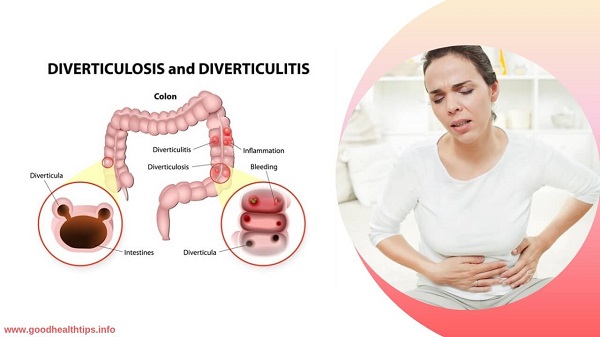This diverticulitis associated with maturation. It is on the wall of the maturation. They are usually found at the bottom of the colon or colon. Occasionally there is an infection, inflammation or irritation in one or more bags. As a result, changes in the abdominal pain, fever, nausea and bowel movements.
At present, diverticulitis has become a very common disease. It is a digestive problem that affects the colon (the large). In this disease, small pods are formed on the wall of the large intestine. When inflammation occurs in these diverticulas then it is called diverticulitis. Diverticulitis is mainly at the lower left end of the colon. It can be both male and female. The disease usually occurs after the age of 40. According to researchers, percent 80 of people generally do not experience any symptoms of diverticulitis. No symptoms can be understood when these diverticula are formed. It can be cured if you live properly in the initial state and take antibiotics properly. However, if the disease is fatal, surgery must proceed.
Signs and Symptoms of Diverticulitis:
Symptoms of Diverticulitis range from mild to severe. Depending on the severity of the disease, the disease may increase suddenly or several days.
(1) Abdominal pain, especially the left side pain
(2) Nausea
(3) Constipation
(4) Blood in the rectum
(5) Fever
(6) Diarrhea
(7) Feeling tired
Causes of this disease:
According to doctors, diverticulitis is caused when a weak part of the inner wall of the colon is pressed. Generally, fiber or fibrous foods help with feces. And, if there is a low amount of fiber in the food, there is a problem with the rectum. Stools take a long time to cause colon pressure. Diverticulitis is caused by the weakening of the inner wall of the colon just under pressure in the colon. The underlying cause of diverticulitis is still unknown, but there are a number of factors that can be helping diverticulitis.The reasons are-
(1) Eats low-fiber foods
(2) Red meat
(3) If you do not exercise
(4) Smoking
(5) Vitamin D deficiency
(6) Genetic
(7) Plays no anti-depressant drugs for a long time
(8) Constipation metal
(9) Weight gain or increase in body fat
Diagnosis:
To identify the disease in case of diverticulitis, a physician asks what symptoms the patient is experiencing and also questions the patient about the daily diet. Do various tests to identify the disease. Physicians perform a thorough physical examination along with anal examination. The tests can be one or more-
(1) Through colonoscopy, doctors determine intestinal problems.
(2) Urine and feces are examined to see how many infections have occurred.
(3) Blood tests are done to check for inflammation or kidney problems.
(4) MRI, CT scan, ultrasound and X-ray
(5) The pregnancy test is taxed in women.
Treatment for this disease:
After diagnosis, a physician arranges for the treatment depending on the patient's condition. Some remedial measures can also be taken. For example, eating fiber-based foods, drinking water when needed, exercising regularly. These can improve the function of the intestines. In addition, other methods of treatment include:
(1) Antibiotic drugs like metronidazole and amoxicillin
(2) Surgery to remove infected diverticula
Foods that can help prevent diverticulitis:
As discussed earlier, if foods are high-fiber, they can prevent diverticulitis. The foods most appropriate to prevent this disease are:
(1) Beans
(2) Brown Rice
(3) High fiber fruits like apples and pears
(4) Vegetables
(5) fish, eggs
(6) oats
Foods to avoid in this disease:
There are certain foods that should be avoided to reduce the risk of getting diverticulitis. Such foods are:
(1) Red meat
(2) Popcorn
(3) Nuts
(4) Fried food in oil, etc.

3 Comments
or
call/whatsapp:+2349057261346
i am ERIC BRUNT by name. Greetings to every one that is reading this testimony. I have been rejected by my wife after three(3) years of marriage just because another Man had a spell on her and she left me and the kid to suffer. one day when i was reading through the web, i saw a post on how this spell caster on this address AKHERETEMPLE@gmail.com have help a woman to get back her husband and i gave him a reply to his address and he told me that a man had a spell on my wife and he told me that he will help me and after 3 days that i will have my wife back. i believed him and today i am glad to let you all know that this spell caster have the power to bring lovers back. because i am now happy with my wife. Thanks for helping me Dr Akhere contact him on email: AKHERETEMPLE@gmail.com
or
call/whatsapp:+2349057261346
IV Wellness Banning CA
IV Therapy Near Me La Quinta CA